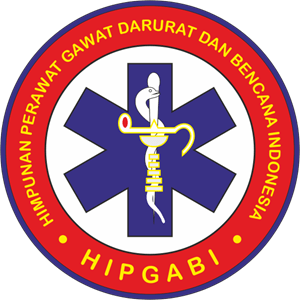PERBANDINGAN LATIHAN NAPAS BUTEYKO DAN UPPER BODY EXERCISE TERHADAP ARUS PUNCAK EKSPIRASI PADA PASIEN DENGAN ASMA BRONKIAL
Downloads
Introduction: Asthma is a disease that often found in the community, according to the data from the World Health Organization in 2006, as many as 300 million people suffered from asthma and 225 thousand people died from asthma worldwide.Patients with asthma often use asthma exercise, pranayama yoga, deep breathing, Buteyko and upper body exercise as a way to help reduce
asthma. Effectiveness of each of these exercises to improve expiratory lung capacity has not been identified.
Methods: This study used quasi-experimental pre-post test design. The population consisted of 21peoples divided into 9 individuals each in Buteyko breathing exercises and upper body exercise. Samples were collected with purposive sampling. The independent variables were Buteyko exercises and upper body exercise, and the dependent variable was the peak expiratory
flow. Data were collected through the observation of peak expiratory flow using a peak flow meter. Data processing used T test with significance <0.05 and comparison of two techniques used independent T test with significance <0.05.
Result: The result of T test analysis showed that p=0.000 indicating there was correlation between the two techniques in improving peak expiratory flow in
bronchial asthma, and independent T test obtained p=0.078, indicating there was no difference between the two techniques in improving peak expiratory flow in bronchial asthma.
Discussion: It can be concluded that Buteyko breathing exercises and upper body exercise has no different function in increasing the value of peak expiratory flow. In patients with bronchial asthma,can useone or both of the breathing techniques, because it has the same effectiveness to increase peak
expiratory flow in assisting the prevention of bronchial asthma.
Ganong, F 2008, (Alih Bahasa Brahm U) Buku Ajar FisiologiKedokteran, Edisi 22, EGC, Jakarta.
Ganong, F & McPhee, S 2010, (Alih Bahasa Brahm U) PatofisiologiPenyakit: PengantarMenujuKedokteranKlinis,
Edisi 5, EGC, Jakarta.
Guyton& Hall 2008, (Alih Bahasa Brahm U) Buku Ajar FisiologiKedokteran, Edisi 11, EGC, Jakarta.
Harries, M 1994, Oxford Textbook of Sports Medicine, Edisi 1, Oxford University Press Inc.,United State.
Harrison, 2008, (Alih Bahasa Ahmad Asdie) Prinsip PrinsipIlmuPenyakitDalam, Edisi 13, EGC,Jakarta.
Holzier 2002, Clinical Sports Medicine, Edisi4, United State: Mcgraw Medical,New York.
Hugh, P et al. 2003, Buteyko Breathing Technique for asthma: an effective intervention, Journal of the New Zealand Medical Association, Vol. 116,No. 1187, pp. 710-716.
Juhariyah, S et al.2012, Efektivitas Latihan Fisis dan Latihan Pernapasan pada Asma Persisten Sedang Berat, Jurnal
Respirasi Indonesia, Vol. 32,No.1, pp. 17-24.
Steiner, R 2003, Buteyko Method Theory.California Biofeedback, Vol. 19,No. 1, pp. 35-47.98
Supriyatno 2011, Terapi Kombinasi pada Serangan Asma Akut Anak, Digital Journals FKUI, Vol. 60,No. 5, pp. 232-236.
1. The journal allows the author to hold the copyright of the article without restrictions.
2. The journal allows the author(s) to retain publishing rights without restrictions.
3. The legal formal aspect of journal publication accessibility refers to Creative Commons Attribution (CC BY).

















